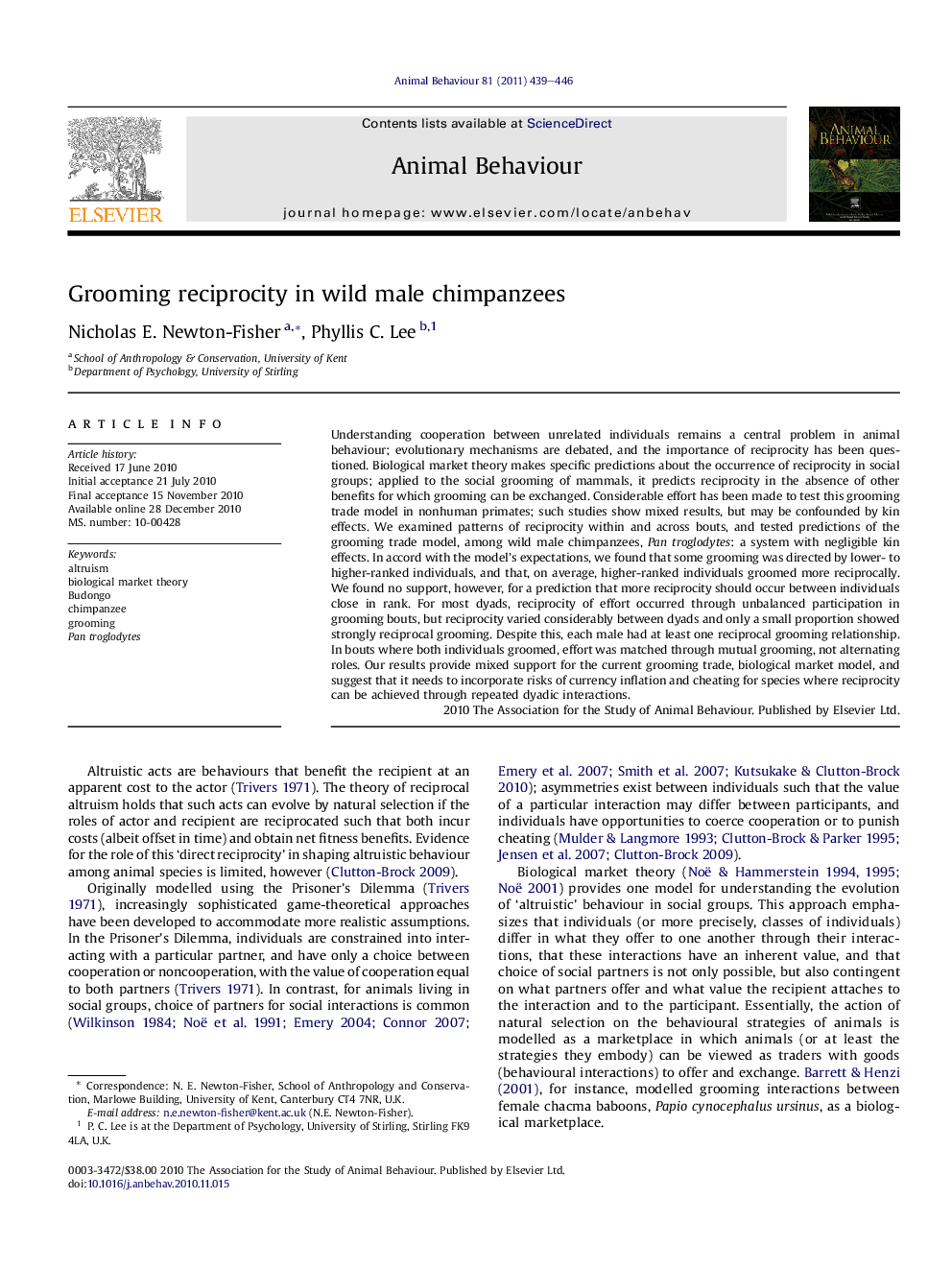| کد مقاله | کد نشریه | سال انتشار | مقاله انگلیسی | نسخه تمام متن |
|---|---|---|---|---|
| 10971185 | 1104308 | 2011 | 8 صفحه PDF | دانلود رایگان |
عنوان انگلیسی مقاله ISI
Grooming reciprocity in wild male chimpanzees
دانلود مقاله + سفارش ترجمه
دانلود مقاله ISI انگلیسی
رایگان برای ایرانیان
کلمات کلیدی
موضوعات مرتبط
علوم زیستی و بیوفناوری
علوم کشاورزی و بیولوژیک
علوم دامی و جانورشناسی
پیش نمایش صفحه اول مقاله

چکیده انگلیسی
Understanding cooperation between unrelated individuals remains a central problem in animal behaviour; evolutionary mechanisms are debated, and the importance of reciprocity has been questioned. Biological market theory makes specific predictions about the occurrence of reciprocity in social groups; applied to the social grooming of mammals, it predicts reciprocity in the absence of other benefits for which grooming can be exchanged. Considerable effort has been made to test this grooming trade model in nonhuman primates; such studies show mixed results, but may be confounded by kin effects. We examined patterns of reciprocity within and across bouts, and tested predictions of the grooming trade model, among wild male chimpanzees, Pan troglodytes: a system with negligible kin effects. In accord with the model's expectations, we found that some grooming was directed by lower- to higher-ranked individuals, and that, on average, higher-ranked individuals groomed more reciprocally. We found no support, however, for a prediction that more reciprocity should occur between individuals close in rank. For most dyads, reciprocity of effort occurred through unbalanced participation in grooming bouts, but reciprocity varied considerably between dyads and only a small proportion showed strongly reciprocal grooming. Despite this, each male had at least one reciprocal grooming relationship. In bouts where both individuals groomed, effort was matched through mutual grooming, not alternating roles. Our results provide mixed support for the current grooming trade, biological market model, and suggest that it needs to incorporate risks of currency inflation and cheating for species where reciprocity can be achieved through repeated dyadic interactions.
ناشر
Database: Elsevier - ScienceDirect (ساینس دایرکت)
Journal: Animal Behaviour - Volume 81, Issue 2, February 2011, Pages 439-446
Journal: Animal Behaviour - Volume 81, Issue 2, February 2011, Pages 439-446
نویسندگان
Nicholas E. Newton-Fisher, Phyllis C. Lee,